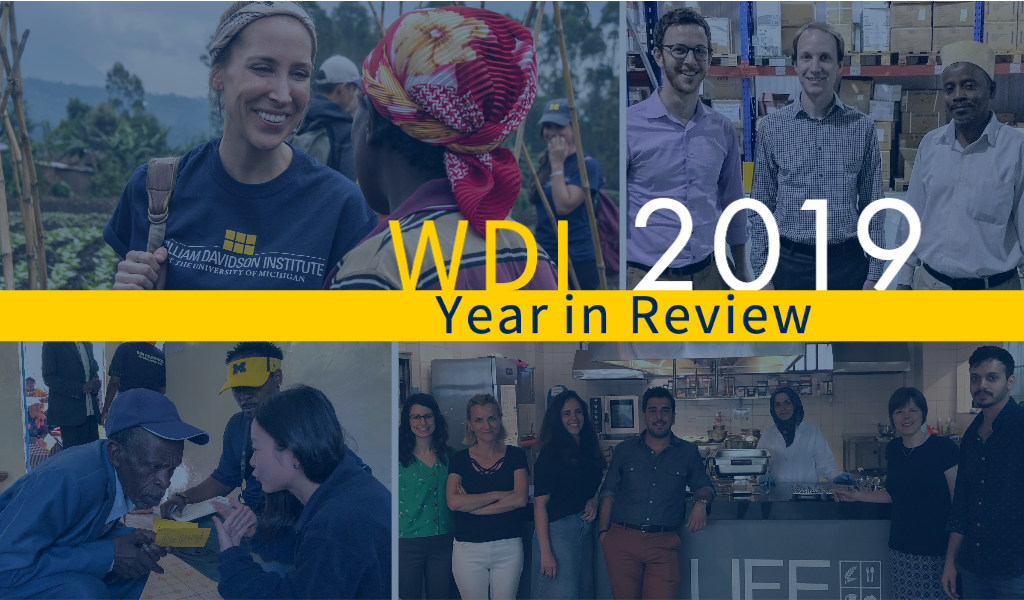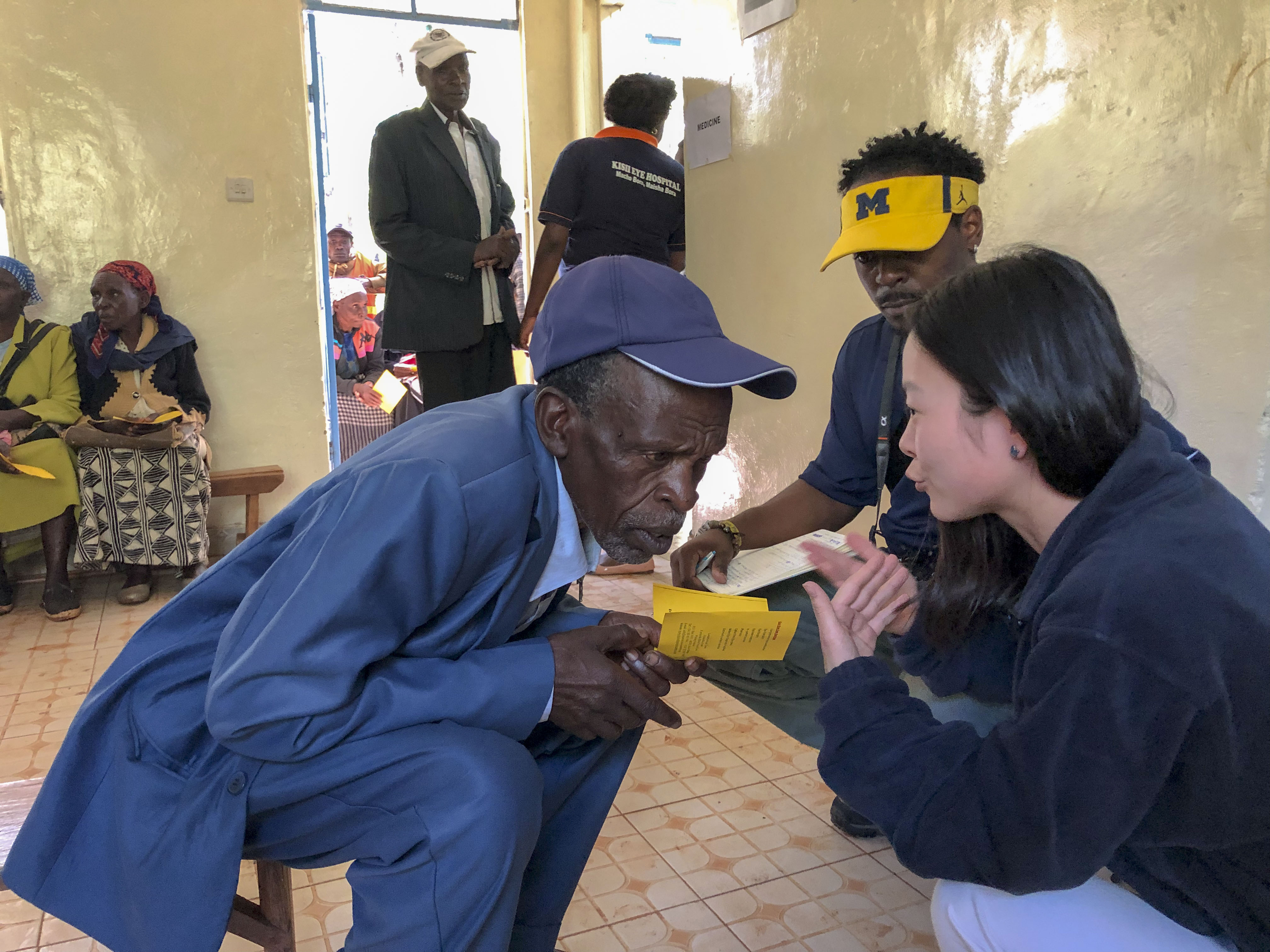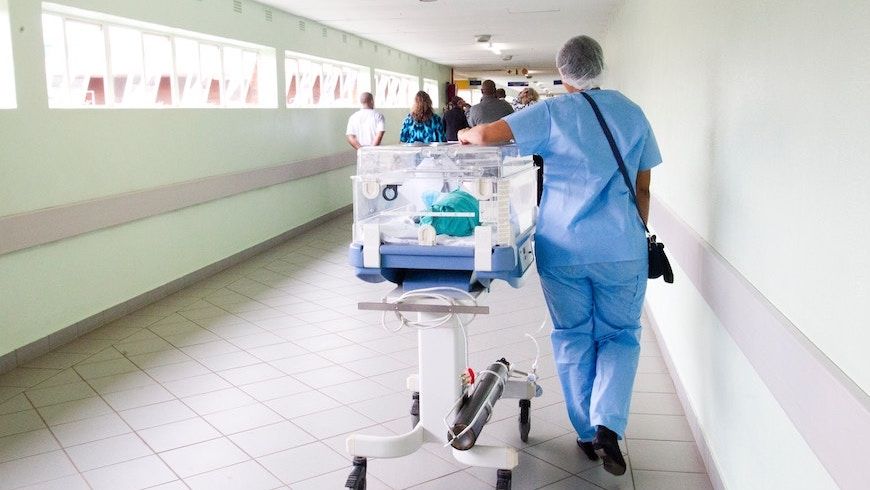WDI collaborated with Aceso Global on a project for the Global Fund to Fight AIDS, Tuberculosis and Malaria to examine how the organization might engage more with the for-profit private health sector in multiple low- and middle-income countries (LMICs) to help achieve its objective of eradicating the three diseases and inform the development of its next five-year strategy.
WDI and Aceso Global conceptualized and carried out a landscaping study of multiple aspects of the for-profit private health sector in LMICs, including health service delivery, supply chain, how care is paid for, and digital health. The team analyzed challenges and barriers to engage with the for-profit private health sector. Recommendations based on the research were presented in a final report on how to expand the Global Fund’s engagement with the for-profit private health sector. Additionally, six case studies were developed to give the Global Fund deeper insights in selected countries, of which WDI developed case studies on South Africa and Kenya.
WDI has been working with the Peruvian American Medical Society (PAMS) for several years to develop its gastrointestinal specialty services business into a financially sustainable undertaking and toposition it as a GI center of excellence. This year WDI completed the business plan and began considering options for purchasing and servicing of equipment.
Infinity Advanced Technology Solutions has been a supplier of imaging and other medical equipment and consumables in Ethiopia since 2016. The company is exploring the possibility of offering radiation therapy and/or a Cyclotron facility for manufacturing Fluorodeoxyglucose (FDG). The WDI team developed a market size estimate, understanding of regulatory hurdles and costs of production as part of a business plan.
This student project framed a comprehensive strategy for ultrasound training, deployment and business modeling at 1200-bed Komfo Anokye Teaching Hospital in Kumasi, Ghana.
This is WDI’s first project with CDEM, the only standalone diabetes clinic in Sri Lanka. The long-term plan is to expand CDEM services across Sri Lanka by integrating satellite locations providing diabetes care in peri-urban/rural areas to CDEM, which is located in Colombo. The first step is considering different models.

“These relationships flow both ways: faculty turn to us for help in their work and we will incorporate them in specific projects we are working on. Our work increasingly integrates our expertise between sectors within WDI as well as with the expertise across the university.”
—Paul Clyde, President of WDI
WDI teams of staff and/or students worked on nearly 50 projects in more than 30 countries in 2019. Our work focused on our core consulting sectors – education, energy, finance and healthcare, as well as our management education programs, entrepreneurship development, measurement and evaluation services and the deployment of University of Michigan graduate students around the world. In the course of the year, WDI worked with faculty and researchers at the U-M Ross School of Business, the Zell Lurie Institute, Law School, the School of Public Health, the College of Engineering, the School of Nursing, the College of Literature, Science and Arts, School of Education, College of Pharmacy, Medical School, Kellogg Eye Center, School of Information, and the School of Environment and Sustainability.
“Our work capitalizes on the expertise of our staff as well as the expertise across campus,” said WDI President Paul Clyde. “Over the past 12 months we have worked with 30 faculty and many students from Ross but also students and/or faculty from a number of other schools within U-M. These relationships flow both ways: faculty turn to us for help in their work and we will incorporate them in specific projects we are working on. Our work increasingly integrates our expertise between sectors within WDI as well as with the expertise across the university.”
Here is a closer look at some highlights from 2019:
The Education consulting sector and its Entrepreneurship Development Center (EDC) continued its work on the LIFE Project, which supports refugees in Turkey as they become entrepreneurs in the food sector. In July, WDI staff members Amy Gillett and Kristin Kelterborn and faculty affiliate Eric Fretz visited the Turkish cities of Istanbul and Mersin. Watch a narrated slideshow below of their trip that details the work they did while there and the program graduates they met. Gillett and Kelterborn also wrote an article for WDI’s affiliated NextBillion website on how to accelerate the success of refugee entrepreneurs.
Building off the success of its M2GATE Program (for more on the program, watch a video below here), WDI’s Education sector is facilitating a new virtual exchange course at the U-M Ross School of Business. Read about Business & Culture: A Virtual Practicum here. And read a WDI Impact Report on virtual exchange written in March.
The Education team also delivered another successful leadership workshop for NGOs in Central and Eastern Europe. Watch an entertaining and informative video on the latest workshop here. The next NGO workshop will take place in May 2020 in Warsaw, Poland.
WDI’s Energy consulting sector, established formally in 2018, explored the hot topic of renewable mini-grids to increase energy access. Specifically, the energy team is beginning to work with local partners in the Bagladeshi village of Bagdumur to determine the viability of a mini-grid there. In early 2019, WDI also deployed graduate students from the U-M’s School for Environment and Sustainability to study how energy enterprises in India and Uganda perform and how best to document it.
WDI’s Healthcare consulting sector team members Michael Krautmann and Ben Davis traveled to Tanzania for a U.S. Agency for International Development project to help strengthen that country’s health supply chain systems. Krautmann also sat down for a Q&A about his supply chain work at WDI, and Healthcare sector faculty affiliate Ari Schwayder answered five questions about his favorite health projects to work on.
WDI’s Healthcare team also conducted a project with the Linked Foundation to inform social enterprise, med-tech, digital health, and private sector investment in Latin America. The Foundation seeks to identify market-based, impact investment opportunities specific to women’s health in Latin America, based on an integrated assessment of the major unmet needs in combination with identification of high-impact solutions and opportunities to foster the enterprise ecosystem and sustainable women’s health solutions. WDI developed an analytic methodology, conducted a landscaping study for Colombia and Peru, and will be publishing the report in January 2020. WDI and the Linked Foundation also had the opportunity to present project findings at four conference settings in the U.S. and Latin America in fall 2019. Linked anticipates this work will inform their investment strategy and catalyze additional resources to the most-needed areas in women’s health in Latin America.
WDI President Paul Clyde wrote an article exploring the profit potential for health care companies in low- and middle-income countries.
WDI Vice President for Healthcare Pascale Leroueil continued her work helping global health organizations such as Global Fund, Gavi and WHO to increase the impact of their investments.
At the beginning of 2019, WDI Vice President of Administration Claire Hogikyan traveled to Ethiopia as the first phase of work to help that country find a sustainable solution to its medical waste problem. Her trip led to the deployment of a team of Ross School graduate students a couple of months later. They developed a proposal that was presented to government officials by an organization that plans to begin operations in early 2020 of a medical waste incinerator outside Addis Ababa.
WDI’s Finance consulting sector partnered with the Ross School of Business and Professor Gautam Kaul on a first-of-its-kind curriculum-based, student-run international investment fund.
The Finance sector team also partnered with Awash Bank in Ethiopia to study a remittance program to increase peoples’ access to capital. How the program would work is explained in this infographic and in this concept note.
In 2019, the Performance Measurement & Improvement (PMI) team continued work on several ongoing projects, including whether developmental evaluation works in a USAID context and using impact data to develop strategies to increase engagement of women in Colombia’s coffee sector. PMI Senior Research Associate Rebecca Baylor also shared her views in an article exploring whether developmental evaluation is an appropriate assessment strategy.
PMI also collaborated with other WDI consulting sectors such as Education, Energy and Healthcare to provide assessment services on their projects, including evaluating the impact of the Business and Culture course. Working alongside the PMI team on that project is WDI Faculty Affiliate Andy Grogan-Kaylor. Read a Q&A about his work and why he enjoys collaborating with the PMI team.
The PMI team also attended several conference proceedings in the impact measurement field and often spoke on panels and roundtables about their work. They led several discussions at the November 2019 American Evaluation Association annual conference. After attending and moderating a discussion at a global metrics conference, Baylor wrote about what is being done to incorporate gender equality into the impact measurement space.
The past year featured several opportunities for University of Michigan students to participate in WDI-sponsored projects. In all, 76 U-M students traveled abroad for WDI work.
Occasionally, students may participate in multiple WDI-sponsored projects. To reward these hard-working, committed students, WDI established the Davidson Field Scholar program. There are currently nine students who have earned this honor.
WDI sponsored 11 Multidisciplinary Action Project (MAP) teams in 2019, and deployed five teams to five countries to study ways to improve healthcare delivery there. One MAP team member who worked in Rwanda recorded her thoughts about the project for a narrated slideshow. (See below).
And we also caught up with a couple of former students – one in South Korea and the other in India – who participated in WDI student projects to see how working on these projects impacted their career paths.
“While I knew it would serve as a useful resource, I did not realize just how helpful the Institute would be until I got to Ross and started interacting with the staff and professors associated with WDI,” Puneet Goenka, WDI alumnus said.
And as part of the WDI Global Impact Speaker Series, the Institute hosted four guest speakers – Sally Stephens of Medicines360; Tami Kesselman of Aligned Investing Global; Ujjwal Kumar of Honeywell and Efosa Ojomo of the Clayton Christensen Institute. Watch an interview with Stephens here; an interview with Kesselman here; and watch Ojomo’s talk here.

An information session for students interested in enrolling in BA685: Healthcare Delivery in Emerging Markets will be held at 5:30 p.m. on Monday, Oct. 28 at the Ross School of Business, Blau Hall Room 1210. The class is offered by Michigan Ross and is organized and primarily funded by WDI.
The class is comprised mostly of second-year MBA students, but is open to all graduate students. It provides students with on-the-ground experience in a foreign country while also contributing to the success of partner health clinics and hospitals. The class also is designed to increase participants’ international leadership capabilities and enhance their awareness of diverse business issues within the current global landscape. It is taught by WDI President Paul Clyde.
The course responds to the increasing need from future employers that managers have international business perspectives to augment their business and management knowledge. During the first part of the term, students learn about healthcare in emerging markets through lectures, guest speakers and case discussions. Students are then divided into five teams and prepared for visits to their selected country, traveling to those destinations in late February and early March.
Last year, student teams worked in Ethiopia, India, Kenya, Peru and Rwanda.

Note: The following post was originally published on NextBillion.net, which is managed by WDI.
By Paul Clyde

Paul Clyde, President of WDI
This past summer, Ghana was selected as the host country for the Secretariat of the African Continental Free Trade Area (AfCFTA), a group of countries with a population of 1.3 billion and a combined income that rivals that of France. These 54 countries will allow free trade between them beginning in July 2020. No company can afford to ignore this market or, more generally, any low- and middle-income country (LMIC). This is especially true for health care companies.
LMIC markets, as categorized by the World Bank, are already large – and they are growing at a much faster pace than high-income countries (HICs). According to the World Bank, total health care expenditures in LMICs were 11% of total health care expenditures in HICs in 2000. By 2015 that percentage had jumped to 25%.[1] And this understates the change. Twenty countries moved from LMIC to HIC between 2000 and 2015 and were therefore counted in the total health care expenditures for LMICs in 2000, but not in 2015. No countries moved from high income to low or middle income over the same period. If we keep the countries that were in the LMIC category in 2000 in the calculation for 2015, the total health care expenditures for LMICs were 29% of 2015 total health care expenditures in high-income countries. Put differently, while HIC health care expenditures were growing at a fast pace at the beginning of the century, LMIC health care expenditures were growing almost three times as fast, according to World Bank data.
The LMIC data described above lump middle-income countries with low-income countries, so it is tempting to think the growth is coming completely from the middle-income countries. This would be a mistake. Since 2000, 33 countries moved from a low-income country classification to middle income. LMIC income levels and health care expenditures are growing at an increasing rate. It is no longer safe for businesses to assume that operations in low-income countries will not be profitable 10 or even five years from now.
Despite the current size and growth rates of these economies, it is not clear if today’s leading companies will be able to serve them. Take the example of Denver-based DaVita, one of the largest providers of dialysis treatments in the world. In 2018, it pulled out of India – despite the fact that India is already the second largest diabetes market in the world, and is expected to become the largest soon. (Diabetes is a leading cause of chronic kidney disease.) DaVita sold its operations in India to NephroPlus, the largest chain of dialysis centers in India. Headquartered in Hyderabad, NephroPlus is raising capital to enter the Middle East and Southeast Asia, capitalizing on the growth opportunities in emerging markets.
It isn’t really a question of whether or not businesses will end up serving today’s low- and middle-income countries as a major part of their portfolio. The question is only which businesses will do it.
—Paul Clyde, President of WDI
This last point raises the stakes. Many companies, regardless of where they are based, will try to take advantage of the opportunities in LMICs, and while it will be challenging, some will succeed. Those that do can eventually be expected to turn their attention to HICs. Entering HICs may require changing their processes or products, and not all will succeed in this step either. But even if only a handful succeed, the competition will be meaningful. Neglect of LMICs today isn’t just a lost opportunity in those markets. It could also spawn competitors in HICs – competitors who, by the time they reach those markets, have a well-honed service or product that is particularly dangerous to incumbent firms.
The task facing today’s leading companies can be met, and doesn’t require drastic innovations – relatively modest modifications to business processes will often be sufficient. Consider, for example, Brook Fekadu, who became a licensed dealer of GE equipment in Ethiopia about five years ago. A major challenge with imaging equipment is its installation, maintenance and servicing. Fekadu trained his staff to provide those services up to GE’s standards. He also purchased equipment himself, and provides diagnostic services to individual patients. Hospitals that don’t have the volume to support some of the expensive diagnostic equipment refer their patients to Fekadu for a diagnosis. Once the hospital develops the volume, he is happy to sell them the equipment and service it. It is an extremely effective business model that can be expected to be repeated in other countries. GE or any other company can use it to expand their geographic reach into LMICs profitably.
It isn’t really a question of whether or not businesses will end up serving today’s low- and middle-income countries as a major part of their portfolio. The question is only which businesses will do it. It will require an investment – including short-term losses – before a return is realized, just as it did with the automobile companies serving China and India in the 1990s. Most of today’s global health care companies, some of which come from LMICs, are already making those investments. Not all will succeed. However, any company that is not making some investment in these markets is effectively ceding them to competitors or, perhaps more likely, entrants into the market, many of which will come from LMICs. And whoever does succeed in developing a business model that is profitable in LMICs has a huge, and growing, market to serve. They may also be able to take a significant share of the market in HICs from incumbents who have not been subjected to the same trials.
Finally, it is worth commenting on the social consequences of this discussion. Any company that succeeds in serving these markets will have done so by satisfying the local customers and hiring people to provide the good or service. The more successful the company is, the more customers will be satisfied and the more individuals will be employed. And that is just the beginning. Success provides the capital and incentive to grow further – something lacking in the absence of profits. We can’t know whether the company that will tap into these markets will be an existing multinational or an as-yet-unformed entrant. But we can be confident that the individuals in these economies will benefit as consumers, employees and/or owners of the companies that prevail.
[1] World Bank’s Health Nutrition and Population Statistics as accessed on August 20, 2019. Based on comparison of current health expenditures in current US dollars. Current US dollars were used instead of PPP because the discussion pertains to the market size for outside investors.
Paul Clyde is the president of WDI and the Tom Lantos Professor of Business Administration at the Ross School of Business at the University of Michigan.
Photo courtesy of Hush Naidoo.
WDI’s Healthcare Initiative has collaborated since early 2018 with physicians in Michigan Medicine’s NIH-funded Ghana Emergency Medicine Collaborative (GEMC) to improve emergency department (ED) operations, finances and clinical delivery. The sites include 1,200-bed Komfo Anokye Teaching Hospital (KATH) and 2,200-bed Korle Bu Teaching Hospital (KBTH) in Kumasi and Accra, respectively. MBA MAP teams have worked in each hospital in March-April 2018 (at KATH) and 2019 (at KBTH), with much recent work focusing on measuring the debilitating consequences of paper billing and payments (called “cash & carry”) that are presently made by patients exclusively in hard currency.
WDI has introduced simple tools at each hospital to track patient flows (e.g., a daily ED census), measure payments-related delays, seek to establish sustainable business processes and identify root causes of operational dysfunction. WDI has also recommended specific, step-wise actions at both hospitals that begin with offering patients a simple mobile payments option and thereafter proceed to digitize and restructure the entire revenue cycle (i.e., the process of generating a bill and collecting payment) and all of the surrounding clinical workflow. WDI is working with development officers from Michigan Medicine’s Emergency Medicine Department and GEMC to line up funding for further work. Several publications are being readied for submission to peer-reviewed journals (e.g., using census collected at KATH and KBTH) and two white papers are also near completion.